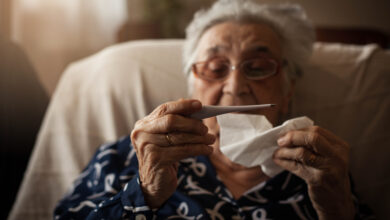Cause is what counts

Plaintiffs must show a negligent act led to suffering in order to win.
In any medical negligence case it is for the patient to prove their accusations on the balance of probabilities. One of the elements of a medical negligence case is that the patient must prove not only that a negligent act of a nurse happened but also that it caused the injury the patient suffered. I can still remember a case many years ago from law school that starkly demonstrates this area of causation in the law.
Three hospital night watchmen drank some tea. Soon afterwards, all three men started vomiting and by 8am they had walked to the ED of the defendants’ hospital. The nurse telephoned the on-call doctor to tell him of the men’s complaint. The doctor, who was himself unwell, did not see them, but said they should go home and call their own doctors. The men went away and the deceased died some hours later from what was found to be arsenic poisoning. Cases of arsenic poisoning were rare and, even if the deceased had been examined, admitted and treated at the hospital, there was little or no chance that the only effective antidote would have been administered in time.
The court held that in failing to examine, admit and treat the deceased, the doctor and hospital were in breach of their duty of care towards the deceased. The plaintiffs’ case still failed, however, because on the state of the evidence, they had not proven that the deceased’s death was caused by the hospital’s negligent inaction. The judge said, “… the plaintiff has failed to establish, on the balance of probabilities, that the deceased’s death resulted from the negligence of the defendants; my view being that, had all care been taken, the deceased might still have died”.
So even if there has been a breach of duty it still must be proven to have caused the injury or loss the plaintiff suffered.
A Victorian court recently had to examine causation in a patient’s claim when there was weak or little evidence in support.
The 56-year-old male patient argued that an IM pethidine injection into this left arm by a nurse was undertaken negligently in that the needle was uncapped and not sterile. He alleged that having been discharged next day from the hospital he developed a severe infection in his left upper arm, which progressed to septicemia and a significant abscess in the arm. Three days post-discharge, the patient’s high fever required admission to a second hospital. The abscess was surgically drained. The patient sued the first hospital for negligence in the actions of the nurse who administered the injection.
At trial, the patient called both his daughters as eyewitnesses to the giving of the injections. The first daughter, 12 years old at the time, told the court the injection was brought into the room in a kidney dish. She recalled an “exposed needle” and that the nurse “just pretty much put it straight into his arm”. The second daughter, 16 at the time, also described the injection as in a kidney dish and said it was “already made up, sitting in the dish”. She said the needle was uncovered and did not have a wrapper on it and that the nurse took the patient’s left arm out of his pyjamas and inserted the needle.
The nurse of three years’ experience who gave the injection had no recollection of the procedure but said it was her usual practice to administer injections of this kind into the buttock. If not, it would be administered into the arm. It was her invariable practice to keep the cap or wrapper on the needle until it was administered.
Two infectious diseases physicians gave evidence on behalf of the parties – Dr. H for the patient and Dr. E for the hospital. Both accepted that there was a small risk of contracting an infection from an IM injection such as the patient received, even if all due care were taken when giving the injection. Dr. H stated that the risk of infection from an IM injection would be reduced if appropriate steps were taken in its administration but under cross-examination conceded that the risk of infection could not be removed but merely reduced. Precautions to minimise infection reduce the risk but could not be quantified, Dr. H said, and concluded that even without the alleged failure to take precautions the infection could have occurred anyway! Dr. E stated that if the nurse used a needle that had been uncapped for a period of minutes, and which had been placed and transported in a kidney dish without a cap, the risk of infection would not be significantly increased. In cross-examination, Dr. E also stated that it would take a period of months to years for an uncapped needle to become overtly contaminated.
Why did the Court of Appeal decide against the patient when the hospital conceded that an IM injection given during his admission (during which there were five injections) was the source of the infection that developed later? There are two reasons. Firstly, the patient must prove their case and the patient was unable to prove his beyond demonstrating a somewhat increased risk of injury arising out of a contentious single event. The court made it clear that an increased risk of injury alone, resulting from a negligent act or omission, is insufficient to prove causation.
Secondly, when gaps exist in the facts on important issues upon which the court needs to be persuaded, the court is not into guessing games or settling for what’s likely. It requires evidence to support reaching or exceeding a threshold of 51 per cent likelihood that events occurred as claimed. The Court of Appeal was not convinced the nurse had given the injection in a negligent manner (due to the daughters’ equivocal evidence) but even if the nurse had, there was no evidence linking such actions to the development of the abscess and infection.
As an old legal maxim states; Affirmati Non Neganti Incumbit Probatio, meaning “the burden of proof is upon him who affirms – not on him who denies”.
Scott Trueman is a lecturer in the school of nursing, midwifery and nutrition at James Cook University.
Email: [email protected]





